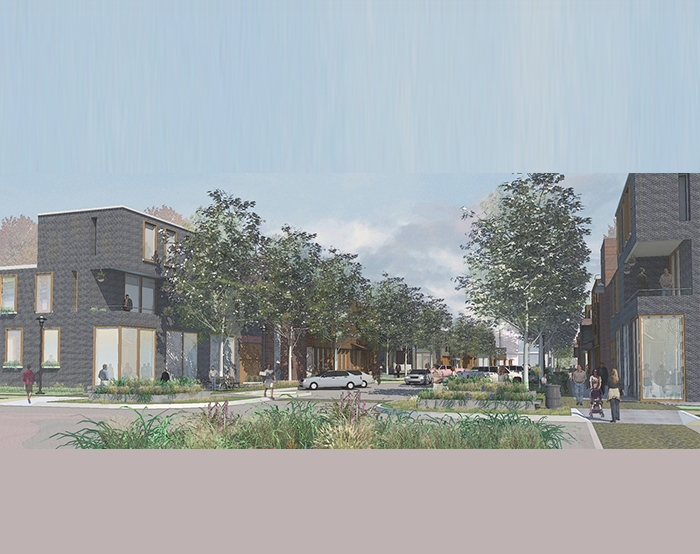21st Century Development Case Study

In 2007, the town of Greensburg was destroyed by a tornado. Afterwards, residents worked with planners to develop a comprehensive sustainability plan to re-envision Greensburg as a resilient community.
- Size: 1.5 miles², 785 residents
- Dates: 2007 planning, 2008-ongoing construction, 2009 wind farm construction
- Project Team: Town officials, BNIM, Greensburg Greentown
- Intent: Make it easier for residents to live sustainable lifestyles, engage residents in the process, make Greensburg a model town
Strategies to Attain Sustainability Goals
Site and Place
Food
Goals: Agriculture tourism plan.
Strategies: Not reported.
Habitat and Diversity
Goals: 20% of lots must consist of permeable surfaces or open space.
Strategies: Greywater retention and filtration through landscaping, innovative landscaping, native prairie species, green way corridor, conservation areas, and stream restoration.
Transportation
Goals: Not defined.
Strategies: Bicycle infrastructure, landscaped surface lots with permeable paving, hybrid vehicle parking, E-85 biodiesel facilities, promote a pedestrian downtown, on street parking, minimal surface parking lots.
Water
Goals: Zero storm water runoff.
Strategies: Use of efficient appliances, bioswales to collect and filter water, collect and store storm water for re-use for non-potable uses, allow for infiltration, promote water conserving irrigation for agriculture, planning for 100 year floods, permeable pavement.
Energy
Goals: 100% renewable energy, net exporter of energy, buildings 50% more efficient than code.
Strategies: 12.5MW wind farm, net metering, efficiency goals for new construction and renovations, homes use 40-50% less energy to operate, LED street lights, geothermal for select buildings, biomass, Architecture guidelines in master plan, 2-3 story buildings for down town, LEED platinum for city buildings and schools.
Health and Equity
Percent of affordable units:
Goals: Affordable rural community.
Strategies: Solar orientation and innovative daylighting strategies, downtown development has increased density, community engagement including younger residents in design proposals, resident education on sustainable infrastructure, walkable downtown, community engagement in planning, aesthetics of development matching resident preferences landscaping, disaster planning.
Materials and Waste
Materials
Goals: Built to last 100+ years.
Strategies: Materials selected for durability, low maintenance, certain buildings promote reclaimed materials, materials selected for low-no toxicity or VOC content, locally sourced preference, recycled content or recyclable preference.
Waste
Goals: Not defined.
Strategies: Single stream curb side recycling.
Sources: greensburggreentown.org | sustainable.org | npr.org






